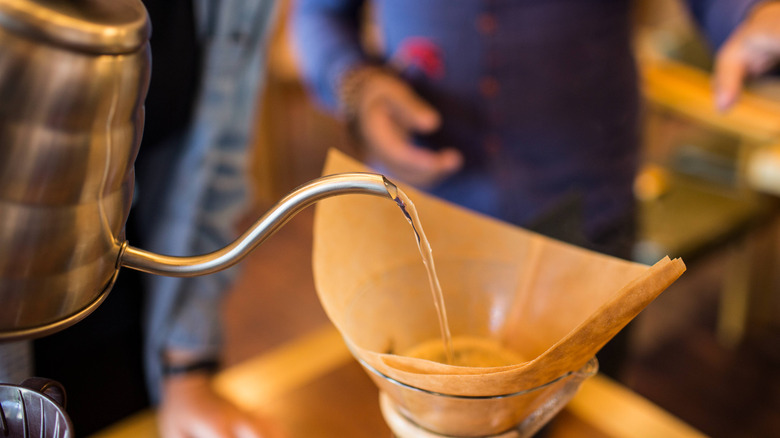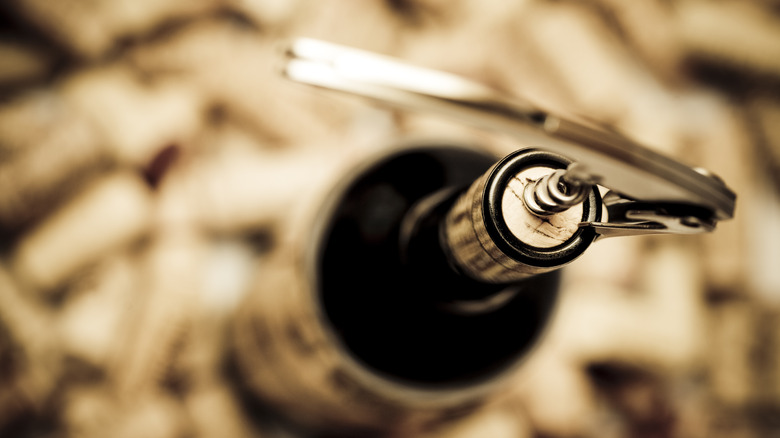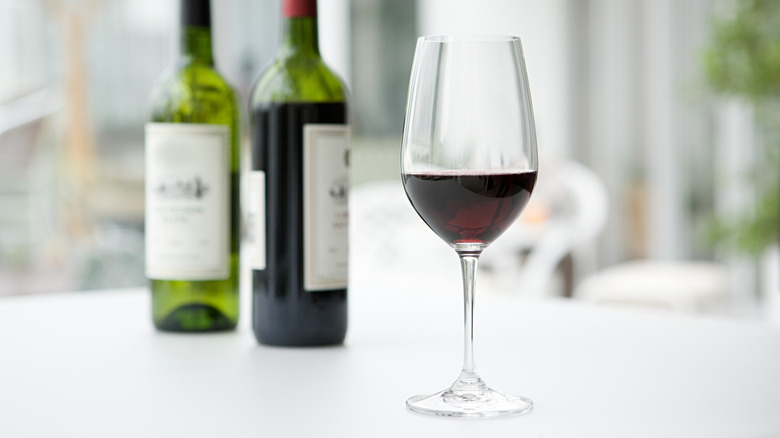The Coffee Filter Trick To Save Your Wine From Floating Cork Remnants
Accidentally pushing a cork into a bottle of wine is a terrifying event, one that can ratchet up the stress level of the evening. Old corks can crumble if too much pressure is applied to them, and no one wants to drink a bottle of Cabernet Sauvignon filled with cork dust. It might be tempting to just pour your wine into glasses and fish out visible pieces of cork. But even if the cork popped in whole, there might be fragments of cork that are invisible to the naked eye.
Don't panic. There's no need to toss wine down the drain just because it got a little contaminated.
The easiest way to fix the wine is to filter it. A mesh strainer or cheesecloth would work, but there's an easier solution for making sure corked wine is safe to drink. The only thing you need is a conventional coffee filter.
How to use the coffee filter trick
You can filter cork-infested wine through a coffee filter to remove pesky cork particles. A fine mesh strainer will work as well, but it won't catch the teeny-tiny pieces of cork dust as well as a coffee filter.
Paper coffee filters are designed to filter out coffee micro-grounds and oils through their tightly-woven structure. But despite their fine texture, wine will pour right through, and even wine sediment will likely make it through the paper. This means that there should be no worries about the coffee filter affecting the taste of the wine (unless, of course, you've already used it to make coffee). Unbleached coffee filters are still a safer bet, though, in terms of preventing flavor contamination.
Simply line a funnel with a coffee filter and pour the wine through to prevent spilling. Filter the wine into another bottle or large vessel.
What to do after you've filtered the wine
Once the wine has been filtered, wash out the wine bottle to make sure there are no cork remnants inside. Then, simply funnel the newly filtered wine back into the original bottle. Voilà — your wine has been de-corked. (And there wasn't even a grocery run involved.)
If you're not planning on drinking the whole bottle of wine that night, you can plug it with a wine stopper or filter the remainder of the wine into a snap-top bottle. If possible, choose a bottle that's smaller than a traditional wine bottle to prevent oxidation.
For example, if you only have half a bottle of wine left, filling up a couple of 8-ounce snap-top beer bottles will keep it fresher for longer than storing it in a half-empty wine bottle, where more of the wine's surface area will be left exposed to oxygen.



